Climate-Change Tour Boat Cruise
A new edition of AIANY's riparian tour expands its focus from architecture to ecosystem.
STreet level
By Anne Quito
The Peter Jay Sharp Boathouse, by Armand LeGardeur Architect, at Swindler Cove Park on the Harlem River. Photo: Courtesy of Classic Harbor Line.
On the surface, there’s nothing better than a sermon about global warming that can sink the mood of passengers on a boat cruise around Manhattan island. No amount of prosecco can distract from the grim evidence of sea-level rise in New York City, nor will a beautiful vintage yacht deny the fact that the city is still years behind from fully divesting from fossil fuels. It’s no small feat that Classic Harbor Line’s new climate change-themed cruise has been selling out since it launched in April.
Conceived by AIANY Allied Member Doug Fox, the AIANY Climate Change Tour: Resiliency, Sustainable Architecture, and the Future of New York City takes participants on a nearly three-hour cruise around New York City, with post-Superstorm Sandy infrastructure, green buildings, sustainable parks, and renewable energy sites as main attractions. The weekly tour ($106 for adults and $68 for students) is the latest, and arguably most consequential, of the four architectural-themed tours the AIA New York Chapter has designed with Classic Harbor Line throughout its 13-year partnership.
Finding the right balance between education and entertainment is key to planning the cruise route, Fox says. “The topics we address can be depressing, and I don’t sidestep any of the large pending challenges,” he explains. “But I do emphasize success stories, such as a number of resilient parks and many green buildings we pass.”
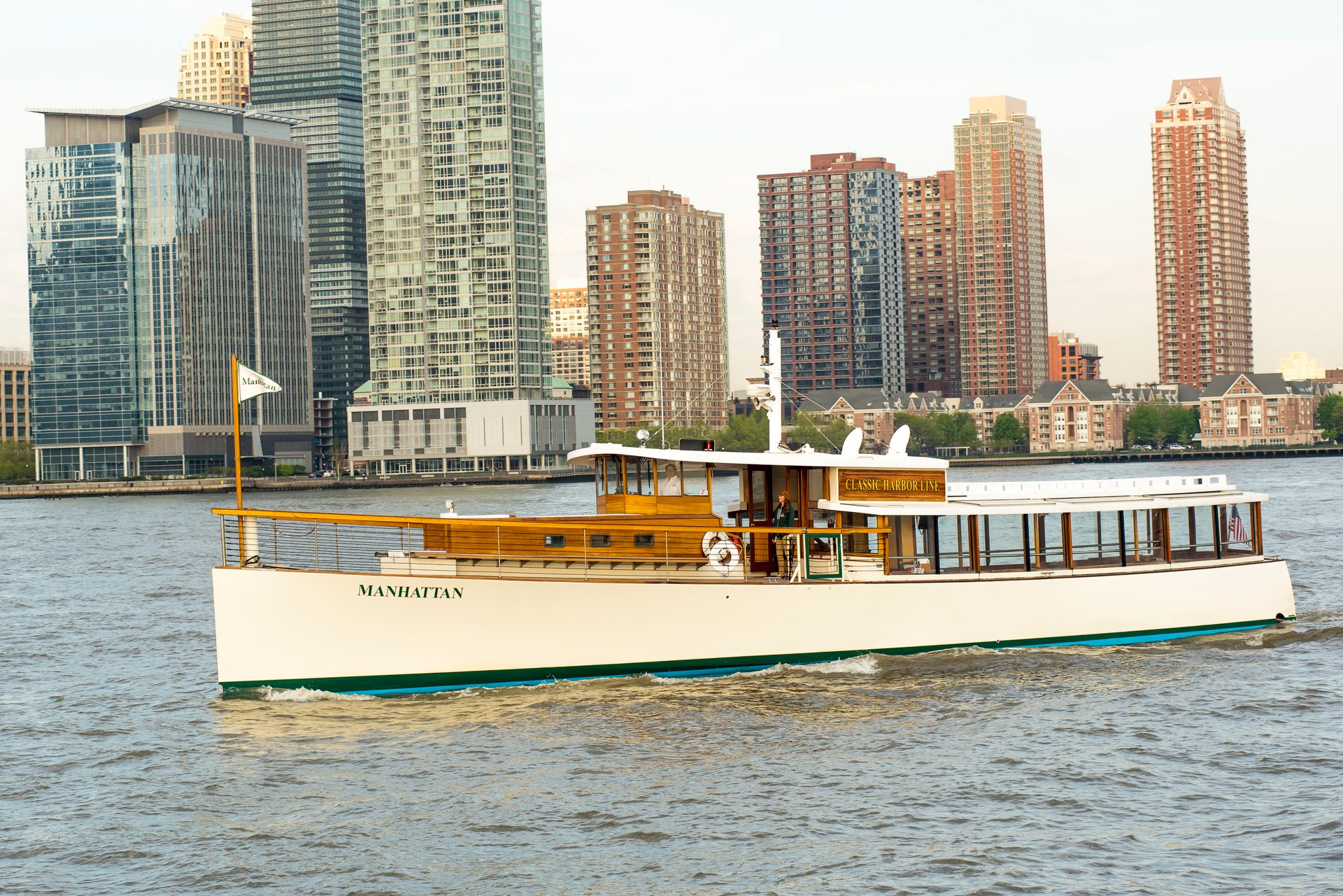
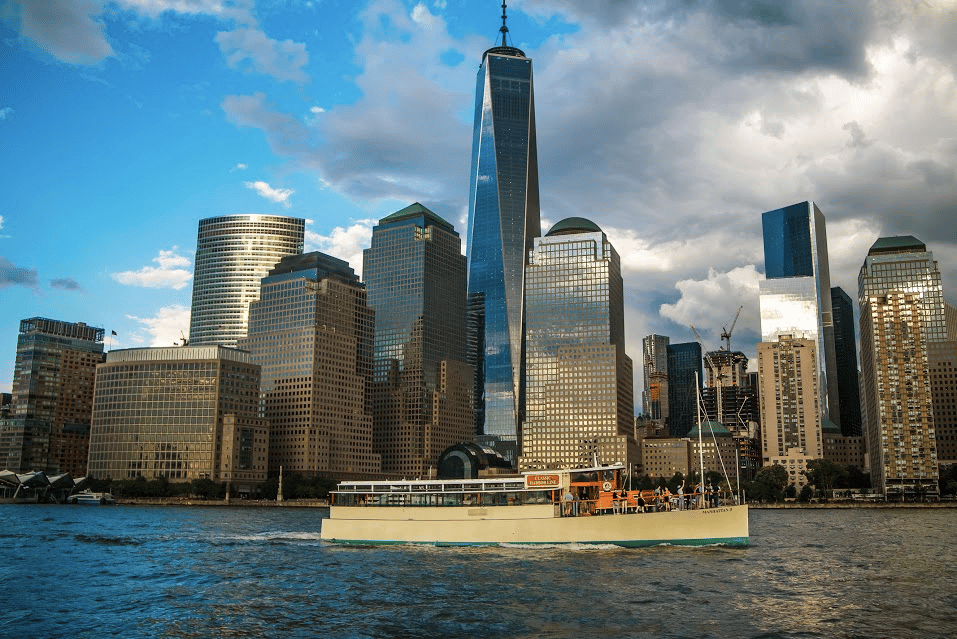
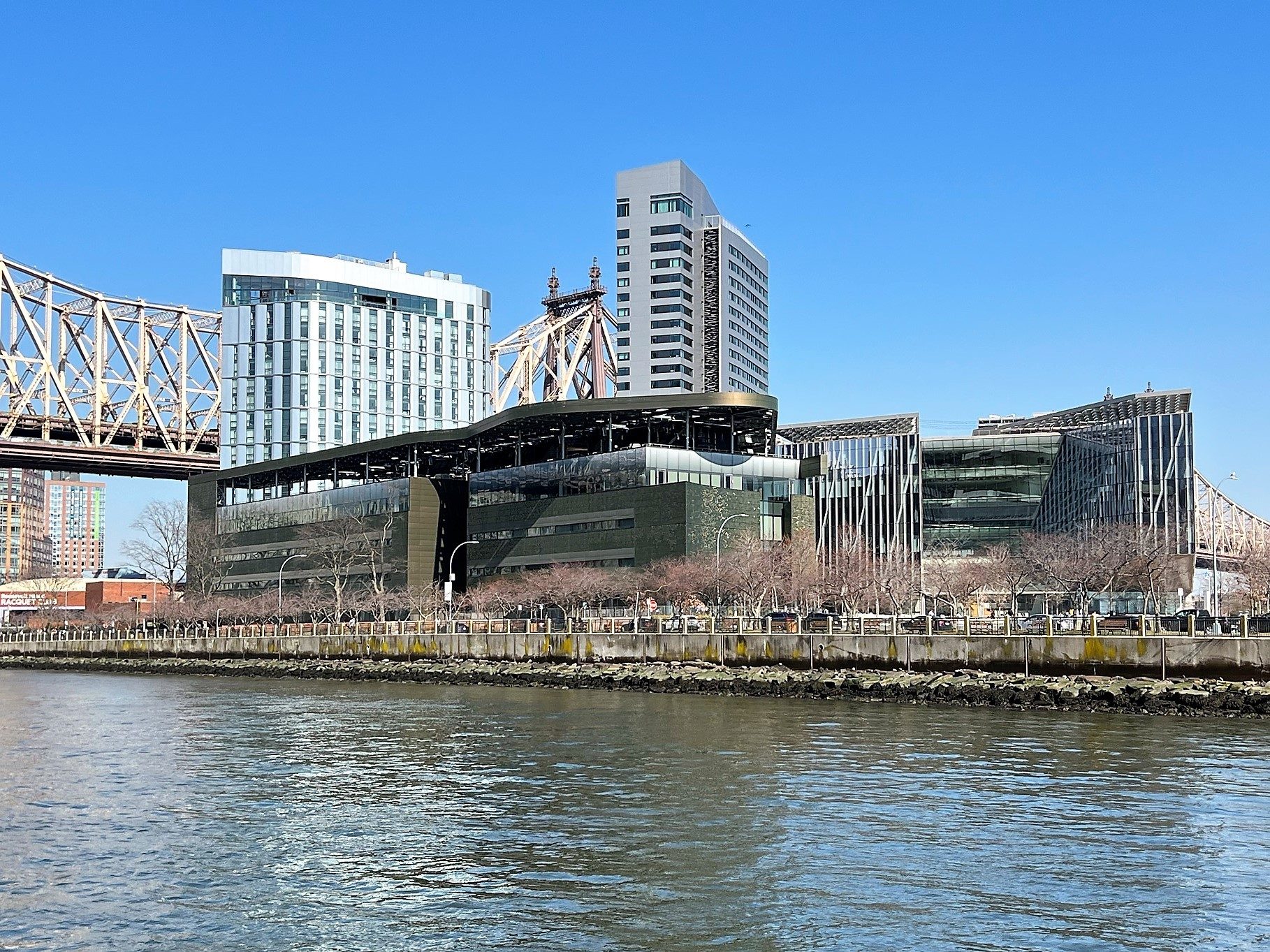
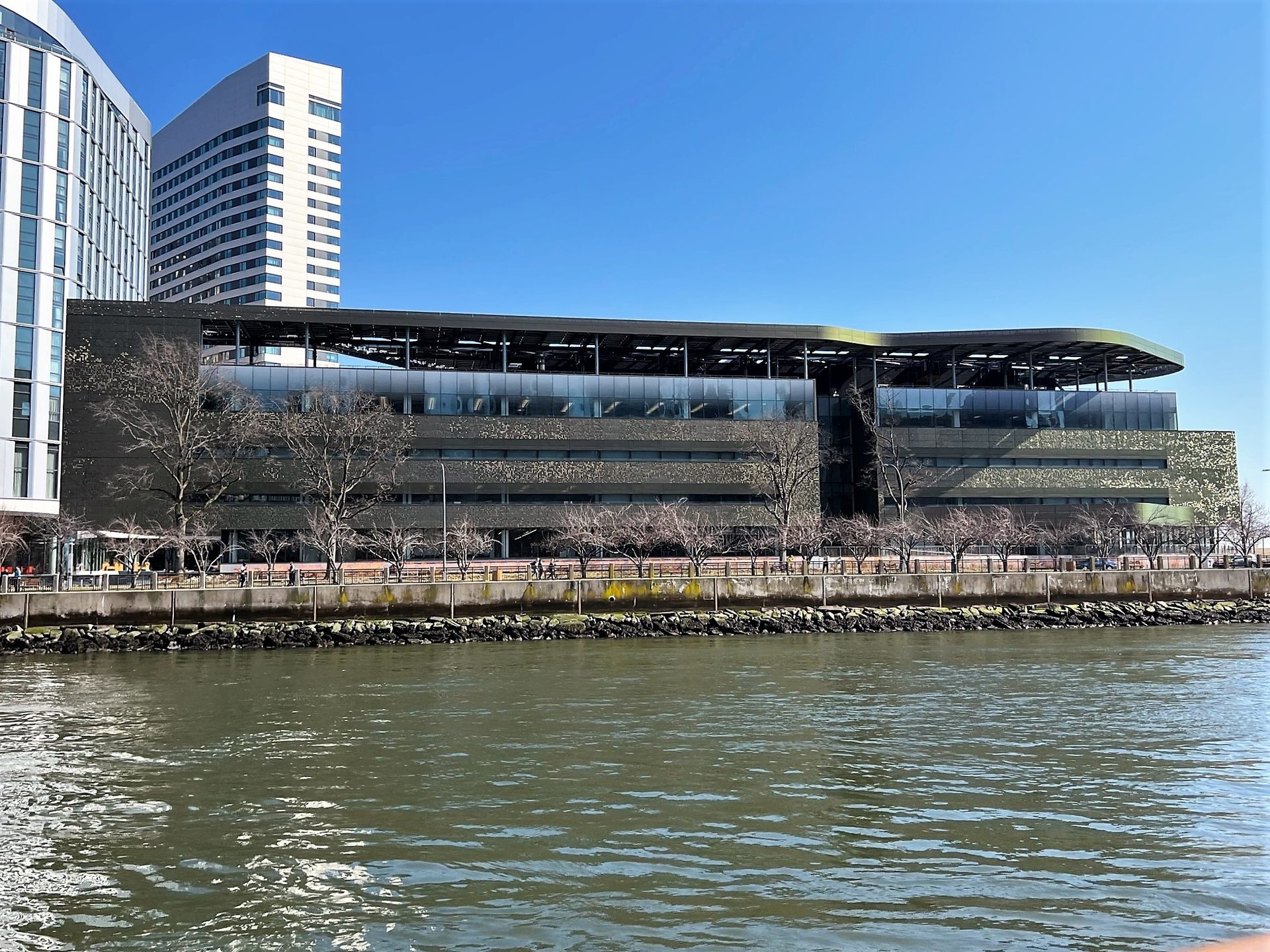

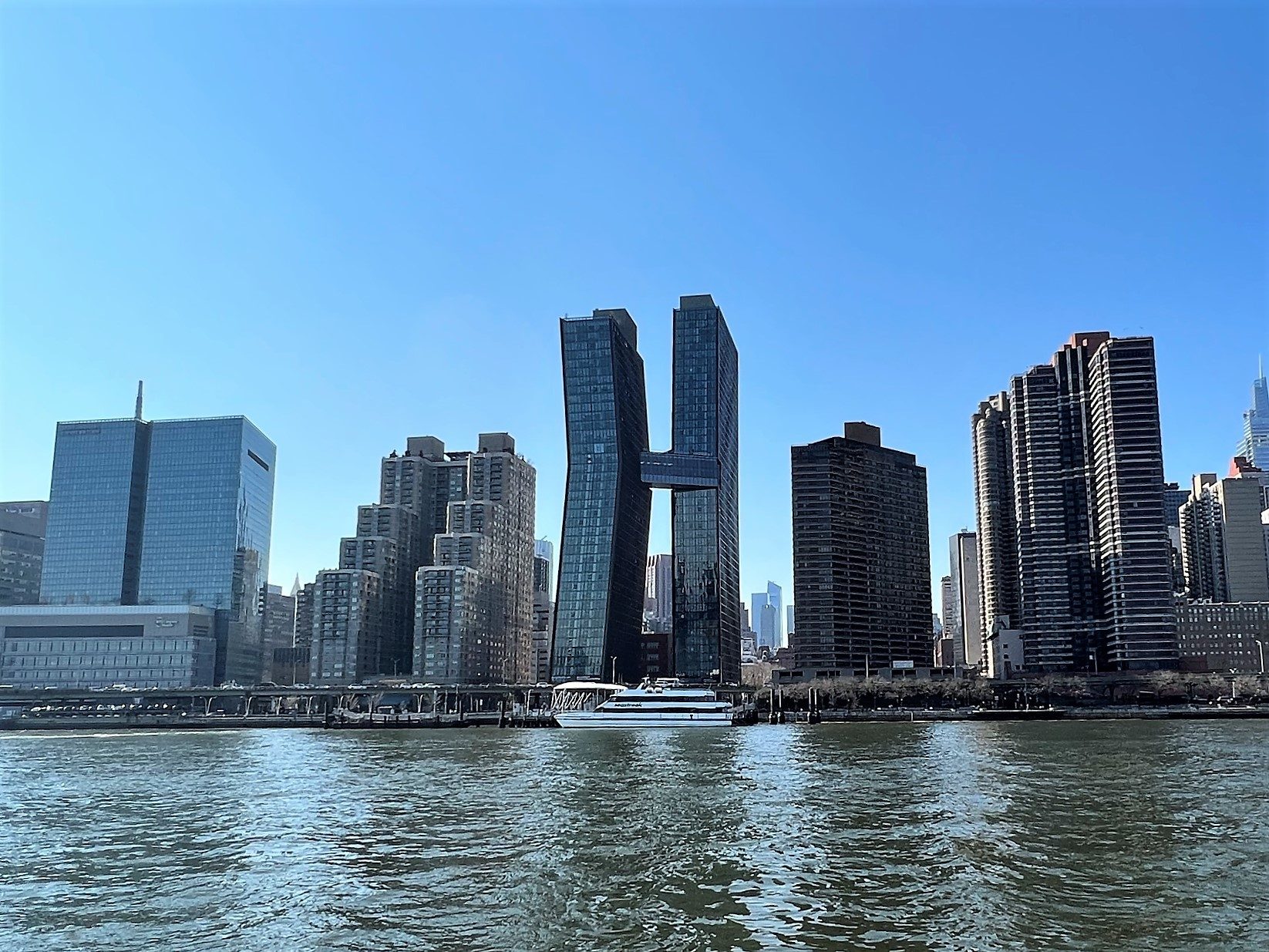
For instance, two passive houses—structures that require very little energy to operate—on 425 Grand Concourse in the Bronx, designed by Dattner Architects, and The House at Cornell Tech on Roosevelt Island, by Handel Architects, are among the crowd favorites, Fox reports. The Ravenswood Generating Station in Long Island City, New York City’s largest power generator that may soon be transformed into a battery storage facility for the state’s large-scale renewable energy projects, also draws curious questions.
Sarah Pennington, a seasoned boat captain and Classic Harbor Line’s general manager, is pleased that the climate-change tour is attracting considerable interest. “Climate change is real and viewable from the water,” she says. Having sailed New York City’s waterways for nearly two decades, Pennington and her crew have witnessed the effects of global warming firsthand. “I can see high tides higher than they were 20 years ago, because now the outer aprons of Chelsea Piers are actually in the water rather than just above it,” she explains. “We are regularly dealing with heat exhaustion and heat-related illness, and we are witnessing more violent and sudden storms as well as a higher frequency of major hurricanes.”
Ultimately, Fox hopes that guests will walk away with a sense that architects, landscape designers, and urban planners have significant agency in fortifying the city against impending climate-related threats. “Addressing climate change is a huge task in New York City,” he says. “The progress we make over the next 10 years will be pivotal in understanding if we are moving fast enough.”
At a time when climate change, as a concept and as a cause, seems urgent and remote at the same time, perhaps getting on the water and seeing threats and possibilities with our own eyes is the key to making it all real.
